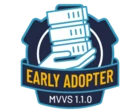I have a UniVerse file with a great diversity of record structures. Consequently I want to return the data for a record through EVAL rather than a DICT I-descriptor entry because DICT entries lead to overflows from other incompatibly structured records.
FWIW, the output will ultimately be through ODBC using dynamically normalized Native UniVerseSQL. Don't worry if this isn't your thing, you may still be able to help with the EVAL I-descriptor expression I need.
The values on the record in question are listed as an arbitrary number of individual attributes, which I can return as a single set of multivalues using LOWER(@RECORD) suitable to be read by ODBC.
However I need to return them with the corresponding original attribute numbers and have not been able to come up with anything.
Any suggestions would be most appreciated.
------------------------------
Greg Clitheroe
Rocket Forum Shared Account
------------------------------







